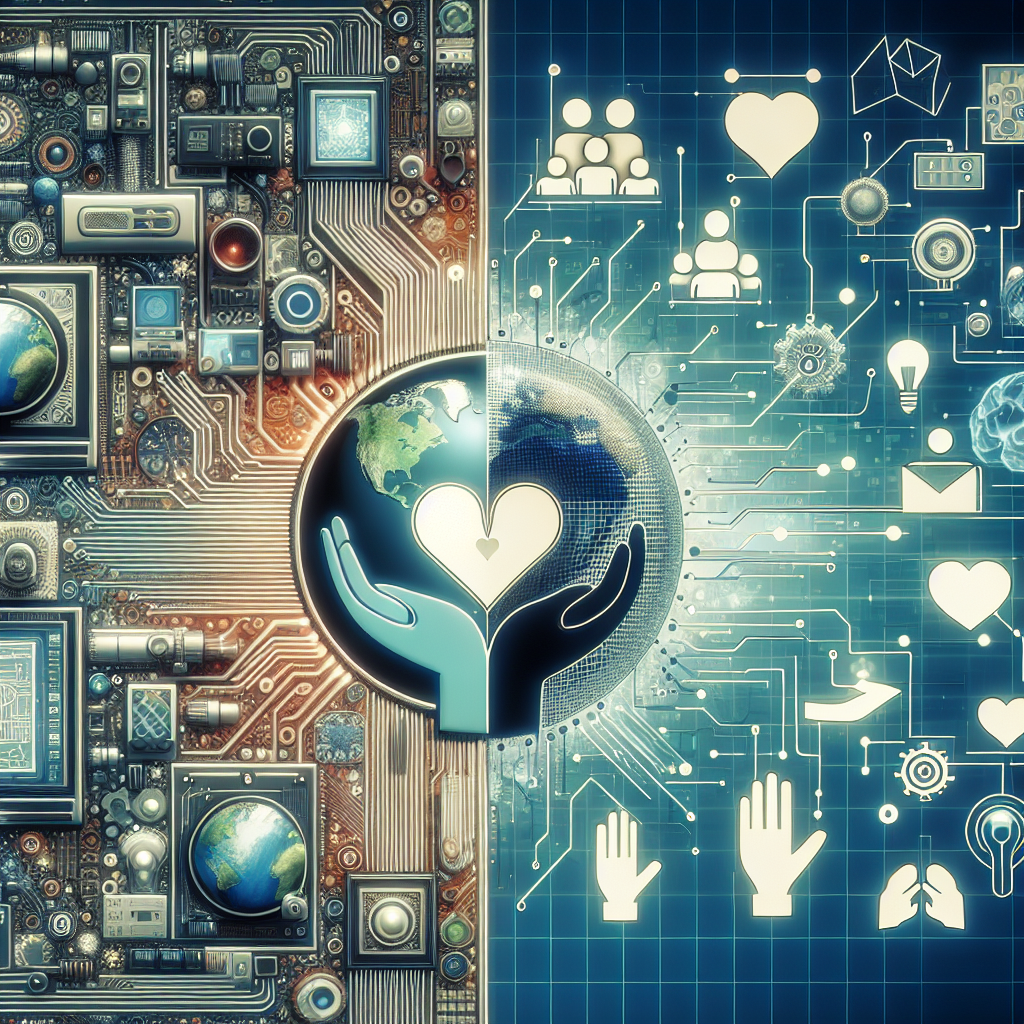Artificial Intelligence (AI) has been transforming industries across the board, and nonprofits are no exception. With the help of AI, nonprofits can enhance their efficiency, improve decision-making, and ultimately achieve their mission more effectively. In this article, we will explore how AI is empowering nonprofits to make a greater impact in their communities.
1. Data Analysis and Insights
One of the key ways in which AI is benefiting nonprofits is through its ability to analyze vast amounts of data quickly and efficiently. Nonprofits often have access to a wealth of data, from donor information to program outcomes, but making sense of this data can be a daunting task. AI tools can help nonprofits to sift through this data, identify patterns and trends, and gain valuable insights that can inform their decision-making.
For example, AI can help nonprofits to predict donor behavior, identify potential donors, and tailor fundraising campaigns to specific audiences. By analyzing past donor interactions and outcomes, AI can help nonprofits to understand what drives donor engagement and how to maximize their fundraising efforts.
2. Streamlining Operations
Nonprofits often operate on tight budgets and limited resources, so any opportunity to streamline operations and improve efficiency is invaluable. AI can help nonprofits to automate repetitive tasks, such as data entry, scheduling, and communication, freeing up staff to focus on more strategic initiatives.
For example, AI-powered chatbots can handle donor inquiries, event registrations, and volunteer coordination, saving nonprofits time and resources. AI can also help nonprofits to optimize their supply chain management, track inventory levels, and reduce waste, ultimately saving money and improving sustainability.
3. Personalizing the Donor Experience
In today’s digital age, donors expect a personalized and tailored experience when engaging with nonprofits. AI can help nonprofits to deliver on this expectation by analyzing donor data and preferences to create personalized communications and fundraising appeals.
For example, AI can analyze donor interaction history to tailor fundraising emails, suggest donation amounts based on past giving behavior, and recommend specific programs or initiatives that align with a donor’s interests. By personalizing the donor experience, nonprofits can increase donor engagement, retention, and ultimately, fundraising success.
4. Predictive Analytics
Predictive analytics is a powerful tool that nonprofits can use to anticipate future trends and outcomes, enabling them to plan and strategize more effectively. AI can help nonprofits to predict donor behavior, forecast fundraising revenue, and identify potential risks and opportunities.
For example, AI can analyze historical data to predict which fundraising campaigns are most likely to succeed, which donors are most likely to contribute, and which programs are most likely to have the greatest impact. By leveraging predictive analytics, nonprofits can make informed decisions and allocate resources more effectively, ultimately maximizing their impact.
5. Enhancing Program Impact
Ultimately, the goal of nonprofits is to make a positive impact in their communities. AI can help nonprofits to assess the effectiveness of their programs, measure outcomes, and make data-driven decisions to improve program impact.
For example, AI can analyze program data to identify areas for improvement, track program outcomes and impact, and measure the success of specific interventions. By leveraging AI tools, nonprofits can continuously monitor and evaluate their programs, make real-time adjustments, and ultimately, achieve greater impact in their communities.
6. FAQs
Q: How can AI help nonprofits with fundraising?
A: AI can help nonprofits with fundraising by analyzing donor data to predict donor behavior, identify potential donors, and personalize fundraising appeals. AI-powered tools can also automate donor communications, track donor interactions, and optimize fundraising campaigns for maximum impact.
Q: How can nonprofits leverage AI for program evaluation?
A: Nonprofits can leverage AI for program evaluation by analyzing program data to measure outcomes, track impact, and identify areas for improvement. AI tools can help nonprofits to assess program effectiveness, make data-driven decisions, and continuously monitor and evaluate program performance.
Q: What are some examples of AI-powered tools that nonprofits can use?
A: Some examples of AI-powered tools that nonprofits can use include chatbots for donor engagement, predictive analytics for fundraising forecasting, and data analytics platforms for program evaluation. These tools can help nonprofits to streamline operations, personalize the donor experience, and achieve greater impact in their communities.
In conclusion, AI is revolutionizing the way nonprofits operate, enabling them to improve efficiency, personalize donor interactions, and achieve greater impact in their communities. By leveraging AI tools and technologies, nonprofits can enhance their decision-making, streamline operations, and ultimately, achieve their mission more effectively. As AI continues to evolve and become more accessible, nonprofits have a unique opportunity to harness the power of AI to make a positive difference in the world.

